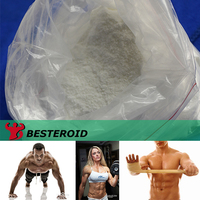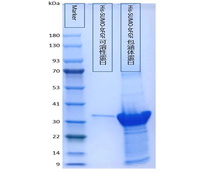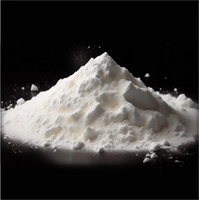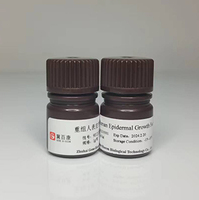Mechano Growth Factor, better known as MGF, is a splice variant of Insulin-Like Growth Factor-1 (IGF-1). This hormone is largely responsible for the healing and building of damaged muscle tissue
post exercise or any other activity that causes damage to the muscle tissue. Although somewhat simplistic to say, the best way to view MGF is as a byproduct of IGF-1, specifically, IGF-1Ec, which
represents the predominant splice in the two splice system created by IGF-1.
MGF Functions and Traits
IGF-1 is a hormone consisting of 70 amino acids that is structurally similar to insulin. Produced by the liver, IGF-1 production is stimulated by the production and release of Growth Hormone (GH)
in the body. IGF-1 affects nearly every cell in the human body, predominantly as it pertains to cellular repair. When muscle tissue is damaged, this creates a response in the body that causes IGF-1
to be spliced into two variants, IGF-1Ec and IGF-1Ea, the former being MGF.
The splice to MGF activates satellite cells causing the growth of new muscle fibers in the body. Further, the presence of MGF increases the body’s rate of protein synthesis. This will cause the
body to increase muscle size and more importantly repair existing damaged muscle. The recovery factor associated with MGF is without question the most important and beneficial aspect of the
hormone.
Although the function of MGF may seem slightly confusing when you first glance, the process itself is rather simple when you look at it step-by-step:
1. IGF-1 is released due to exercise (occurs post exercise)
2. IGF-1 is spliced to MGF
3. MGF activates recovery of muscle tissue via an activation of muscle stem cells
Effects of MGF
The effects of MGF can largely be summed up by two words, hypertrophy and recovery. MGF being released into the body is beneficial for any athlete or fitness enthusiast regardless of bulking,
cutting or any other phase he may be in. The release of MGF is something that occurs naturally, but in the case of performance enhancement the idea is to create a greater release of MGF than can be
had naturally. The most common way to accomplish this is through the use of Human Growth Hormone (HGH). HGH carries with it many health and performance benefits, including the elevation of IGF-1
levels, in turn increasing MGF. However, direct supplementation of MGF is also possible through synthetic products.
Data shows that direct increases of MGF (injections) to have increased muscle fibers by 25% in a mere three weeks, where natural occurring took upwards of four months to produce 15% in rodents.
MGF is highly anabolic and can be a great addition to an off-season gaining phase. However, because the half-life of the product is only a few minutes and because it must be used immediately post
training, it can be difficult for some people to use. For the benefits of injectable MGF to be had, it must be administered within a few minutes of a training session to catch the open window. If
the individual were to train, drive home and then inject, he would have wasted the opportunity.
A more suitable option for many MGF users may be PEG-MGF. PEG-MGF is active in the body for several hours, whereas standard MGF only for a few minutes. Further, MGF will only remain active in the
area of injection for a few moments. If you were to train biceps, for best results you would need to inject both biceps immediately post training. With PEG-MGF a single injection along with the
hours of activity would allow for it to take a more full effect.
Side Effects of MGF
The side effects of MGF are somewhat lacking, meaning official data is sparse. Pain or irritation at the injected area is the most common complaint, which normally refers to a sore or itchy feeling
at the injected site.
Price:Negotiable
Package:Aluminum foil bags or fiber drum
DeliveryTime:About 7 days
Contact us
Skype:liuyang_newbio;newbiopharm
Email:newbio@biocar.cn;newbiopharm2015@gmail.com
Tel:86-027-86879876;86-15327198583














